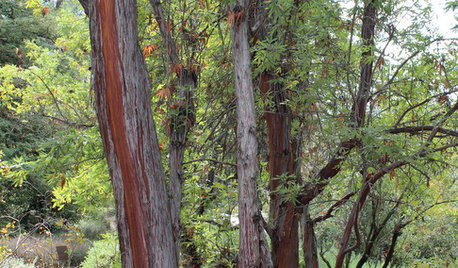ficus tree
gw409
11 years ago
Related Stories

HOUZZ TOURSHouzz Tour: Eclectic Chilean Home Embraces Trees
Ficus trees star in the interior courtyard of this Santiago house, which celebrates its design history, quirks and mix of styles
Full Story
Rooting for Indoor Trees
Houseplants tend to get all the glory indoors, but trees deserve their place in the sun — and in your living room, your entryway, your ...
Full Story
LANDSCAPE DESIGNGreat Design Plant: Catalina Ironwood, a Tree for Antiquity
Peeling bark gives this tree an antique look, but its low water needs are perfect for drought-prone areas today
Full Story
GARDENING GUIDES5 Best-Behaved Trees to Grace a Patio
Big enough for shade but small enough for easy care, these amiable trees mind their manners in a modest outdoor space
Full Story
HOLIDAYSHouzz Call: Show Us Your Christmas Tree!
How lovely are your branches? Post a picture and share your stories
Full Story
HOUSEPLANTSSee How Fiddleleaf Fig Trees Can Liven Up Your Decor
The tropical houseplant with big green leaves adds a cheerful and striking design element to rooms
Full Story
TREESHow to Use Trees Inside
Bring nature close by integrating the beauty of trunks and trees — even smaller leafy trees — into your home
Full Story
SIDE YARD IDEASNarrow Trees for Tight Garden Spaces
Boost interest in a side yard or another space-challenged area with the fragrance and color of these columnar trees
Full Story
FARM YOUR YARDIf You Have Room for Only One Fruit Tree ...
Juice up a small garden with one of these easier-care or worth-the-effort fruit trees for a mild climate
Full Story
MOST POPULARHouzzers Deck the Halls
From traditional to quirky to innovative, readers show their Christmas tree style
Full Story




Tiffany, purpleinopp Z8b Opp, AL
tapla (mid-Michigan, USDA z5b-6a)
Related Professionals
Prairie Ridge Landscape Architects & Landscape Designers · Bloomington Landscape Contractors · Boca Raton Landscape Contractors · Dedham Landscape Contractors · Elmhurst Landscape Contractors · Fort Atkinson Landscape Contractors · Hilo Landscape Contractors · Kettering Landscape Contractors · Mastic Beach Landscape Contractors · New Berlin Landscape Contractors · North Haven Landscape Contractors · North Ridgeville Landscape Contractors · Santa Ana Landscape Contractors · Waipahu Landscape Contractors · North Hills Landscape ContractorsHorticultural Help
tapla (mid-Michigan, USDA z5b-6a)
Horticultural Help
tapla (mid-Michigan, USDA z5b-6a)
christine1950
Tiffany, purpleinopp Z8b Opp, AL
tapla (mid-Michigan, USDA z5b-6a)
RKWilcox
tapla (mid-Michigan, USDA z5b-6a)
gw409Original Author
tapla (mid-Michigan, USDA z5b-6a)
gw409Original Author
tapla (mid-Michigan, USDA z5b-6a)